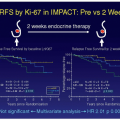Local Management of the Axilla
Monica Morrow
Jay R. Harris
MANAGEMENT SUMMARY: AXILLA
The management of the axillary lymph nodes changed dramatically with the introduction of sentinel lymph node biopsy (SLNB), and has continued to evolve in parallel with changes in our understanding of breast cancer biology and improvements in systemic therapy. SLNB is now a well-established technique. A sentinel lymph node can be detected in more than 95% of women with breast cancer and predicts the status of the remaining axillary nodes with greater than 90% accuracy, and after a negative SLNB, first failure in the axilla is seen in fewer than 1% of patients. With experience, it has become apparent that there are relatively few contraindications to SLNB. The procedure is contraindicated in inflammatory breast cancer and other T4 tumors. Isosulfan blue dye is not known to be safe in pregnant women, and although the fetal dose with radioisotope mapping is estimated to be safe (1), the procedure has not been widely adopted in pregnant women. With these few exceptions, SLNB is the axillary staging procedure of choice in clinically node-negative women.
In women with clinically positive nodes, a needle biopsy diagnosis of metastases prior to surgery avoids the need for sentinel node biopsy and frozen section, saving OR time and costs by proceeding directly to axillary dissection. Axillary dissection should not be performed without histologic confirmation of nodal metastases because physical exam has a false-positive rate of approximately 20%. If the diagnosis of metastases is not confirmed with a needle biopsy, SLNB is appropriate, but care must be taken to remove any palpably abnormal nodes at surgery even if they are not radioactive or blue, since lymphatics that are blocked with tumor cells may not take up the mapping agents.
Axillary lymph node dissection (ALND) remains standard management for patients with clinical N1 disease, after histologic confirmation, regardless of whether they are undergoing mastectomy or breast-conserving surgery (BCS). ALND also remains standard management for clinically node-negative women found to have sentinel node macrometastases who are undergoing mastectomy.
There is more controversy regarding the management of clinically node-negative women having BCS with whole breast irradiation. The American College of Surgeons Oncology Group (ACOSOG) Z0011 trial (2) indicates that women with metastases in one or two sentinel nodes can be managed with no further axillary treatment after SLNB with no decrease in survival and a rate of first failure in the axilla of less than 1% at 6 years follow-up. SLNB alone is associated with significantly fewer side effects than ALND (3). However, there were concerns that patients randomized into ACOSOG Z0011 were an extremely favorable, highly selected subset of women undergoing BCS, and the results of this study were not generally applicable. This concern was addressed in a study at Memorial Sloan-Kettering Cancer Center which prospectively examined an unselected series of patients meeting ACOSOG Z0011 eligibility criteria to determine how often ALND could be avoided. Of 2,157 T1 and T2, clinically nodenegative women undergoing BCS between August 2010 and November 2012, 381 (18%) were found to have hematoxylin and eosin detected sentinel node metastases, and 287 met ACOSOG Z0011 eligibility criteria. ALND was performed for metastases in three or more sentinel nodes or for gross extracapsular extension. Only 45 patients (16%) had such criteria for ALND. Patients requiring ALND did not differ significantly from those who did not by median age, nuclear grade, or estrogen receptor (ER) and HER2 status of the tumor. Tumors were significantly larger in the ALND group (2.2 cm vs. 1.6 cm; p > .001) (4). These results indicate that most women undergoing BCS who have metastases to the sentinel nodes have involvement of a limited number of nodes and are candidates for management without ALND. Further follow-up is necessary to determine the incidence of axillary recurrence. However, 72% of women selected for ALND on the basis of involvement of more than two sentinel nodes or the presence of gross extracapsular extension had additional involved lymph nodes, while the Memorial Sloan-Kettering Cancer Center nomogram for predicting the likelihood of additional nodal metastases in breast cancer patients with a positive sentinel node biopsy predicted additional positive nodes in only 34% of patients treated with sentinel node biopsy only, suggesting that the selection criteria used for ALND identifies a population of women at risk for a heavier burden of nodal disease. The findings of the ACOSOG Z0011 trial are supported by the results of the International Breast Cancer Study Group (IBCSG) 23-01 trial, which addressed the need for ALND when micrometastases were present in the sentinel node. In spite of 13% of patients in the ALND arm having additional nodal disease, the 5-year rate of the regional recurrence in this study was 1%, although not all patients received whole breast radiation therapy (RT) (5).
Stay updated, free articles. Join our Telegram channel

Full access? Get Clinical Tree






